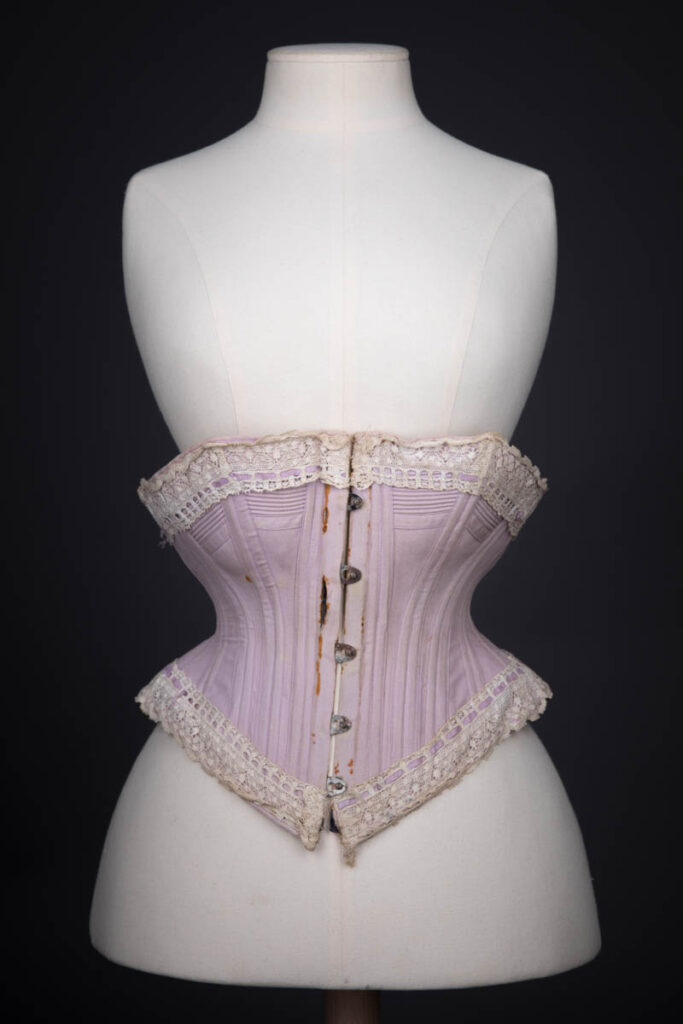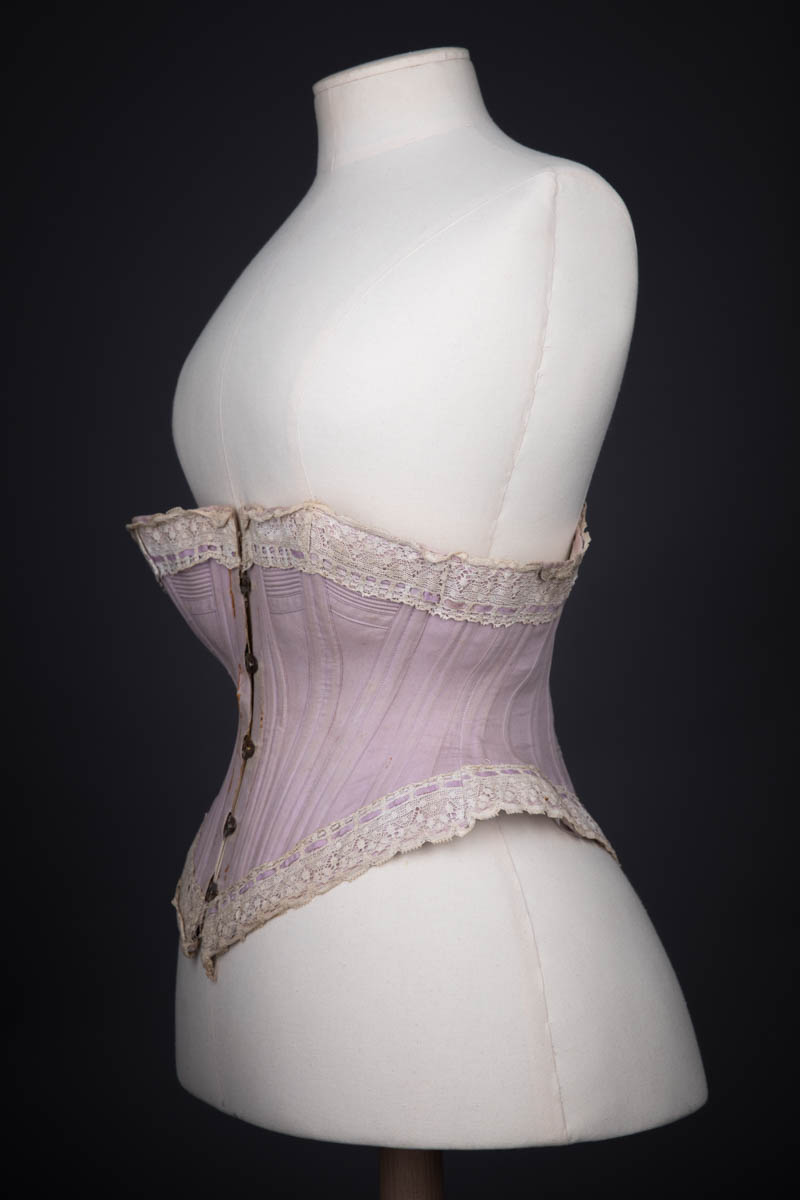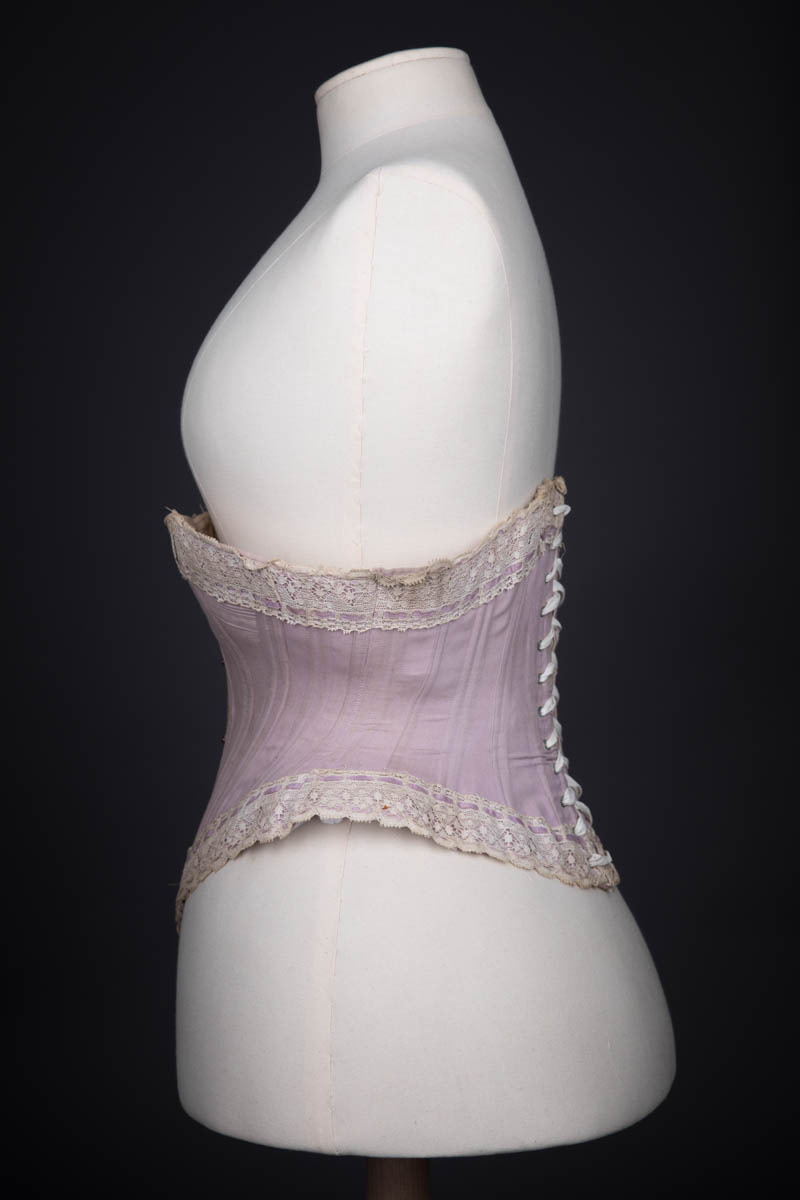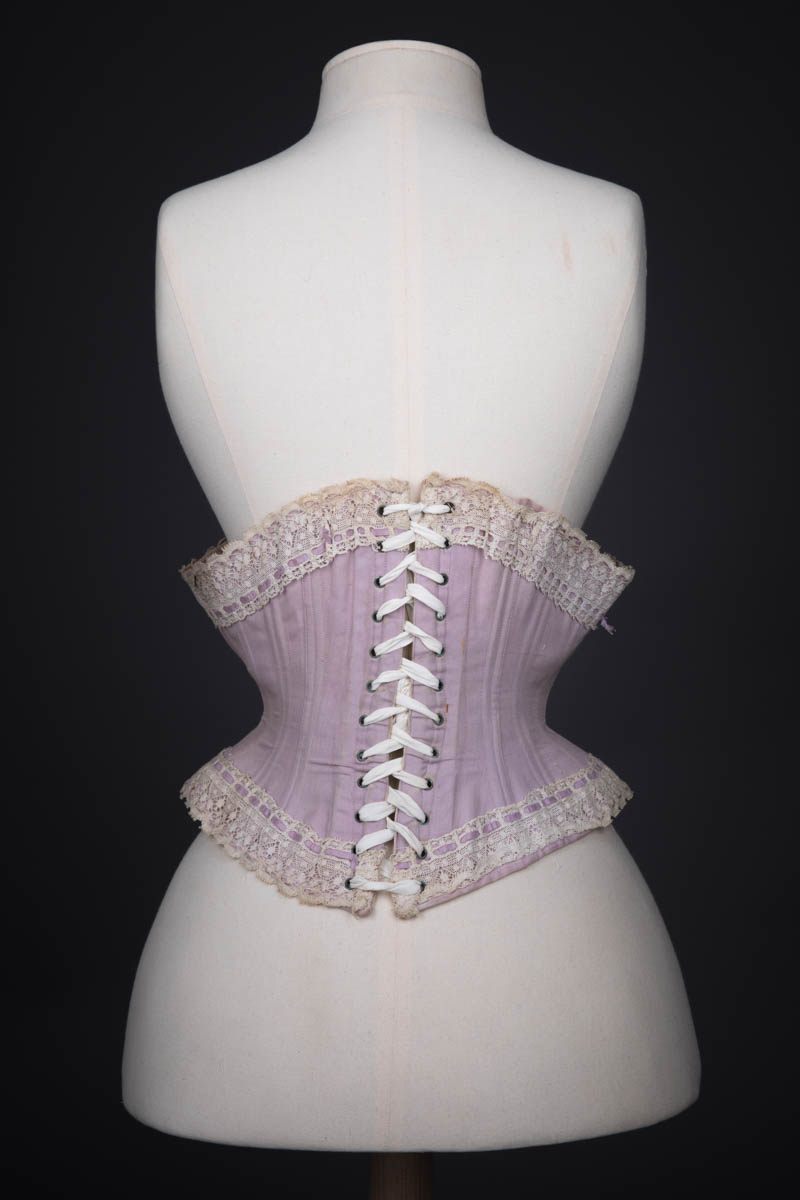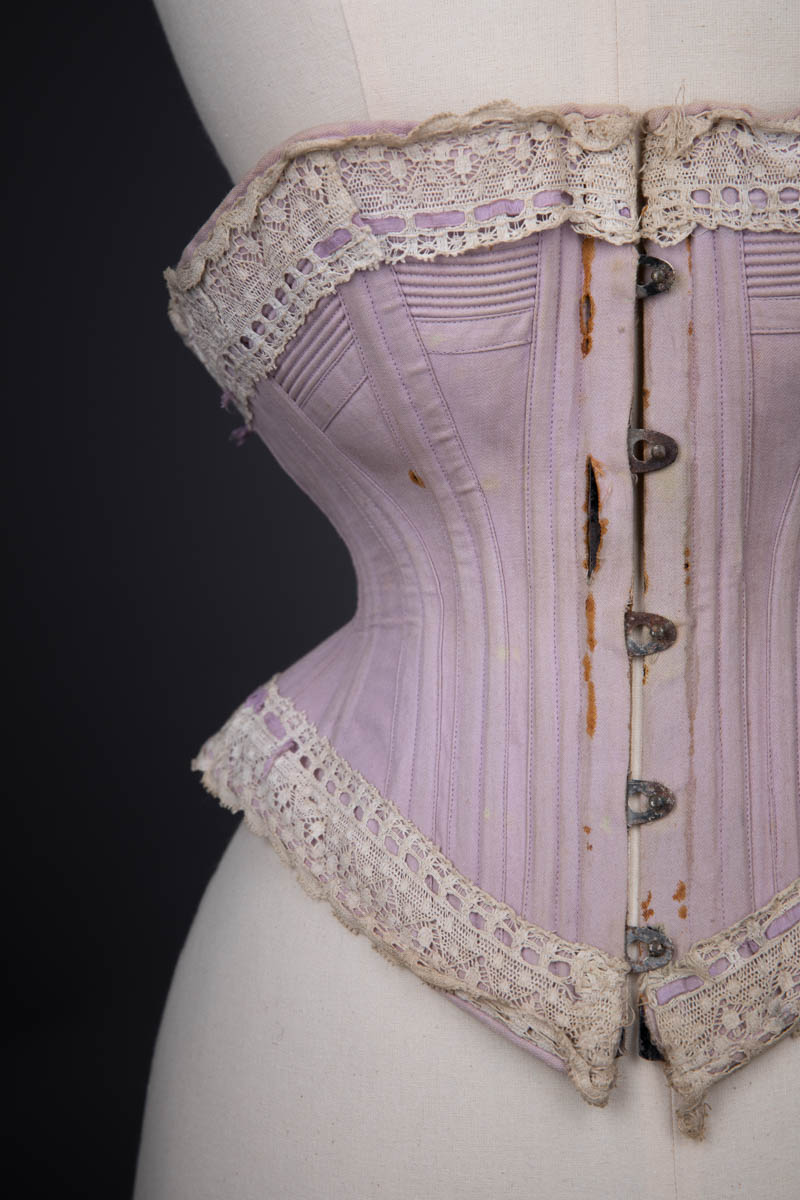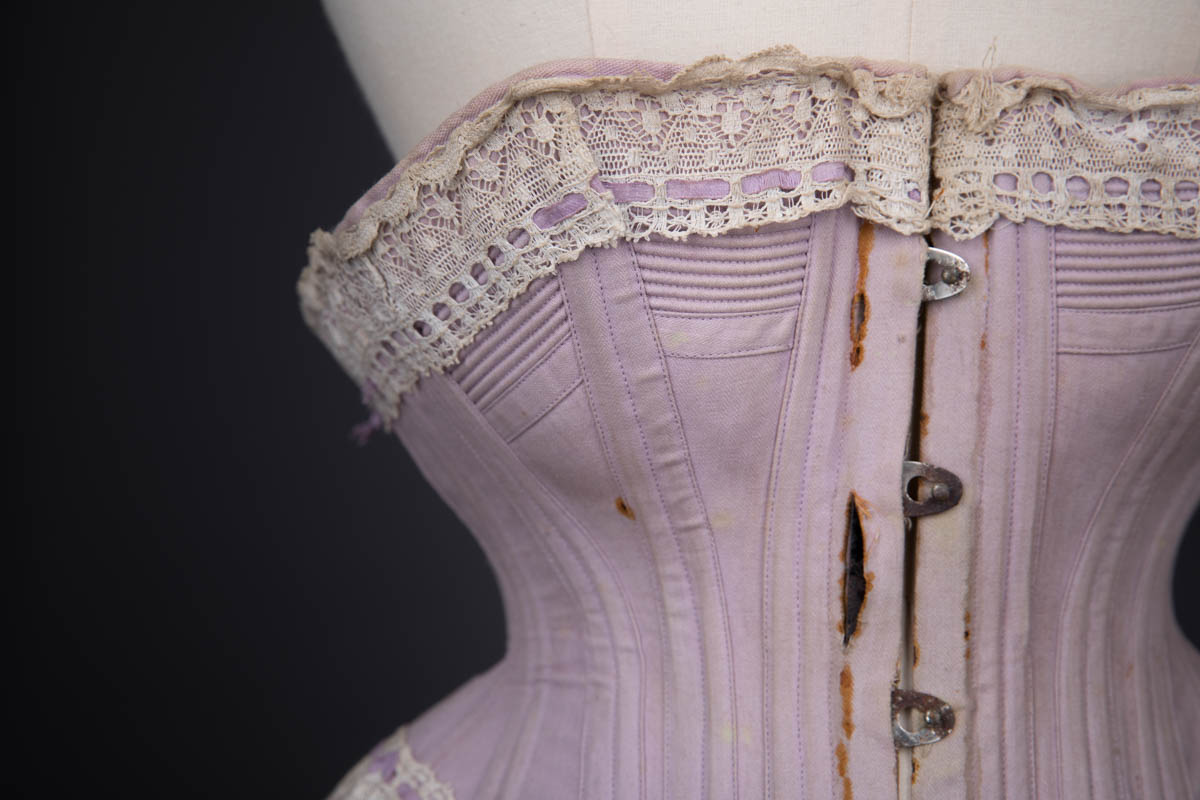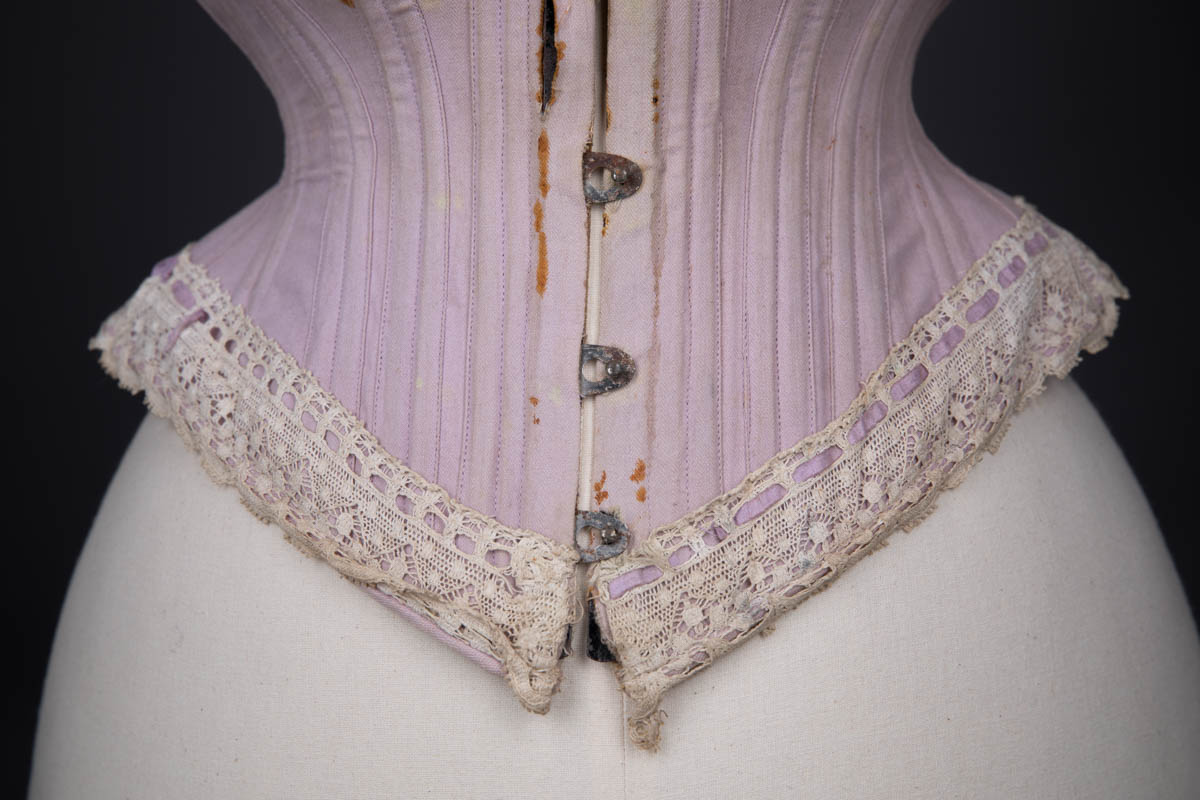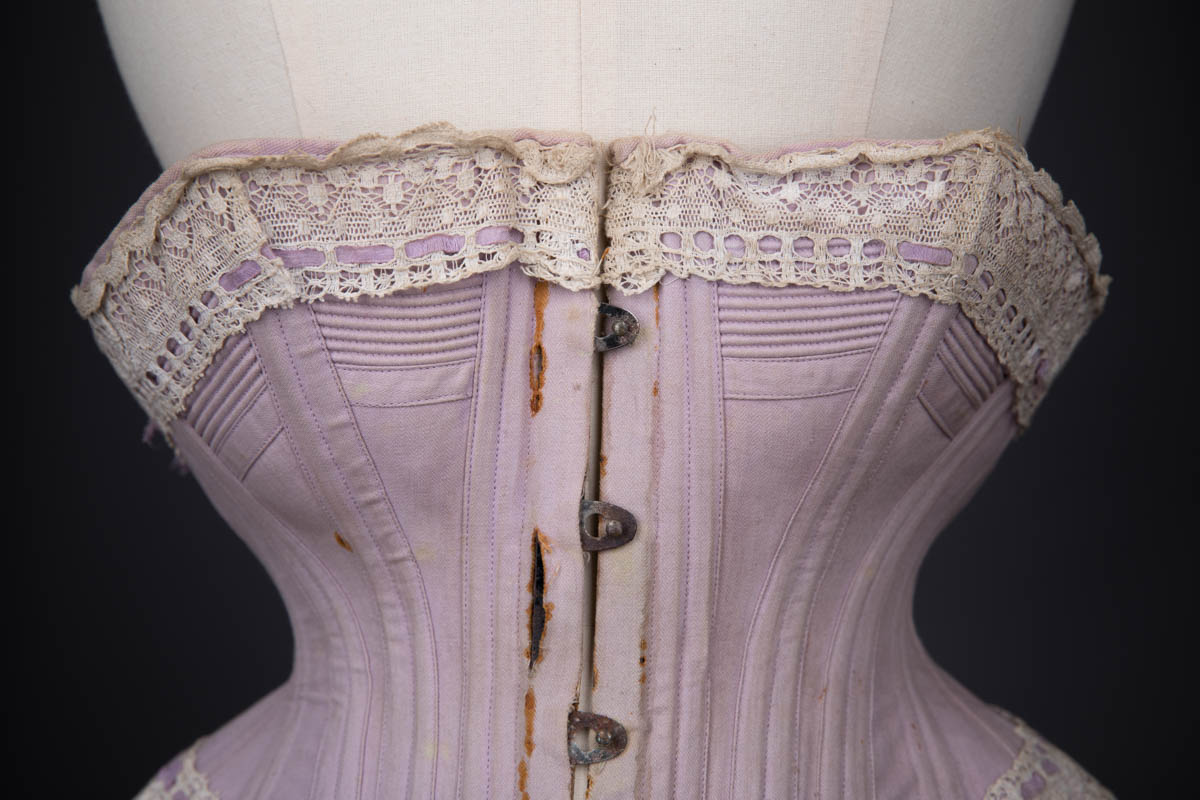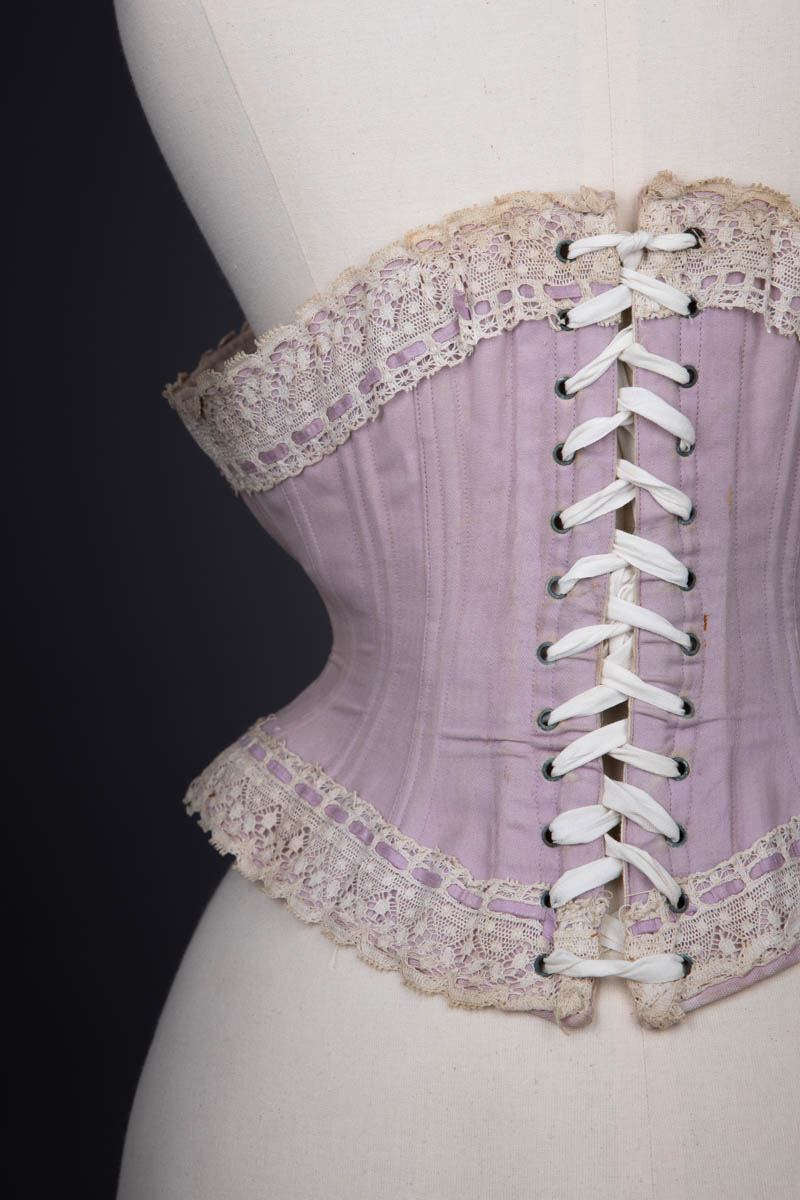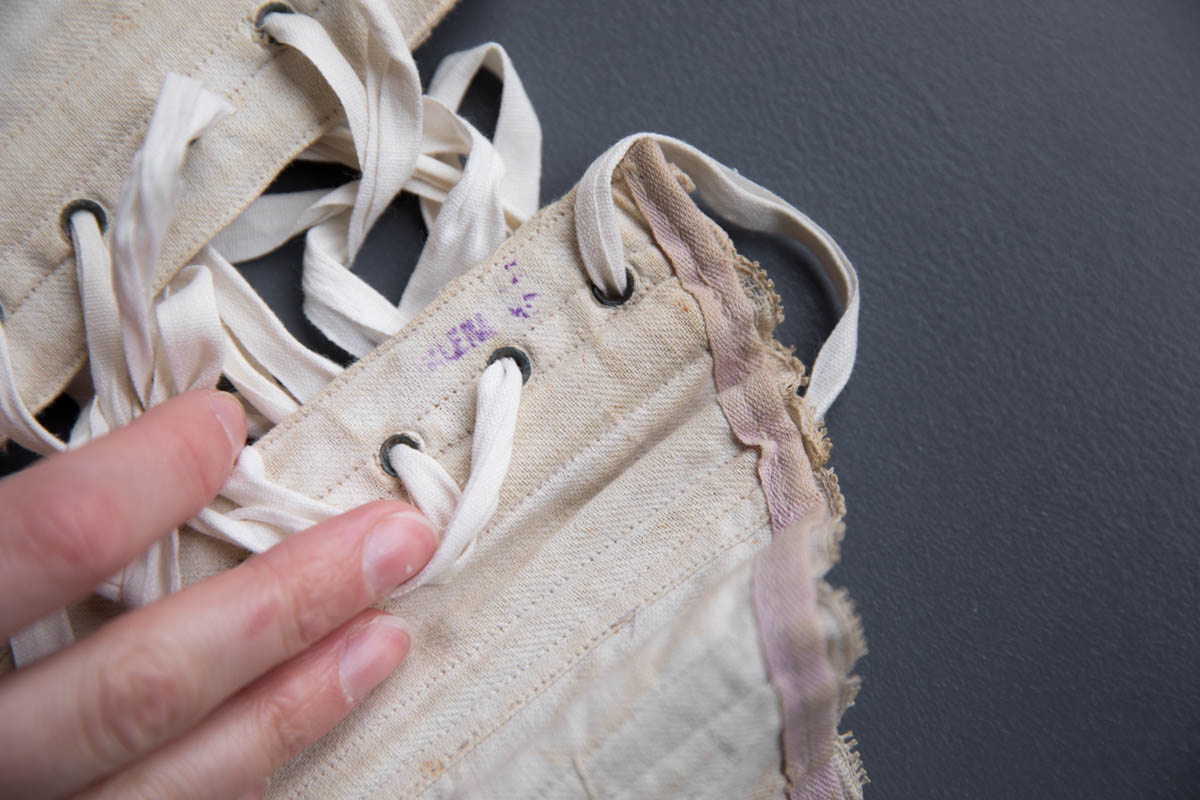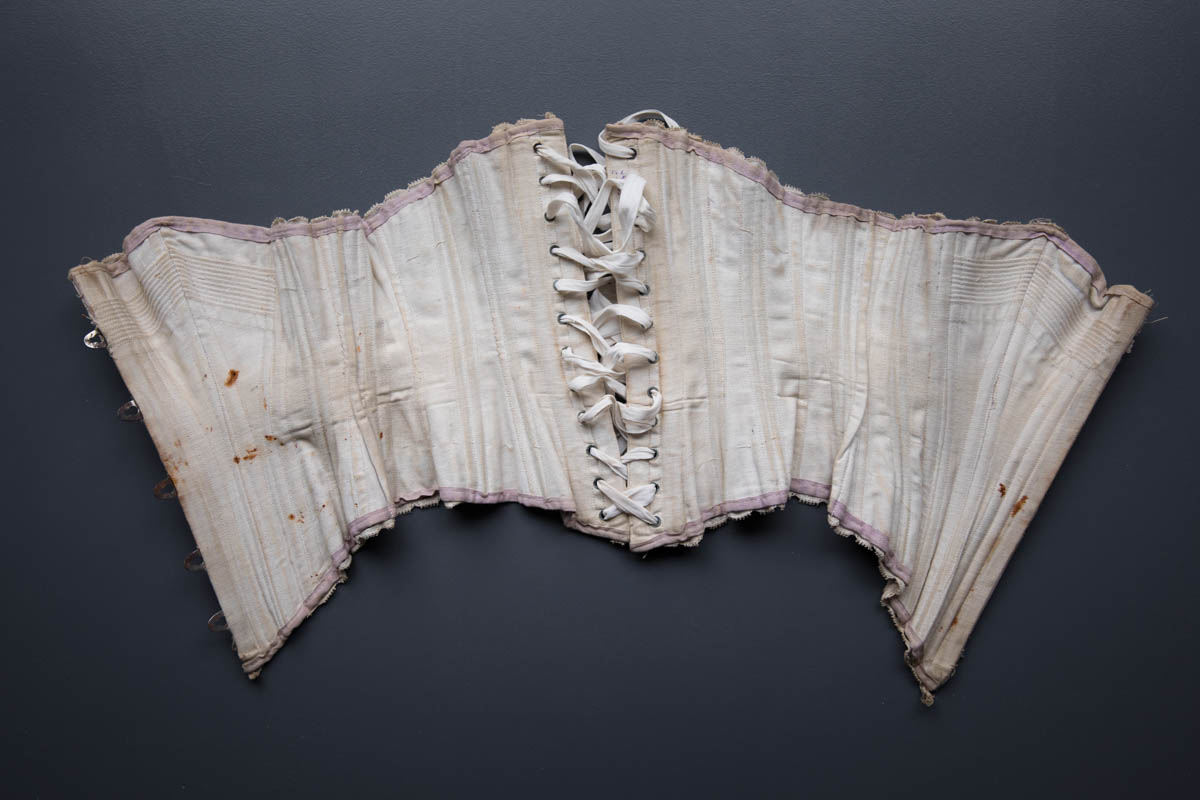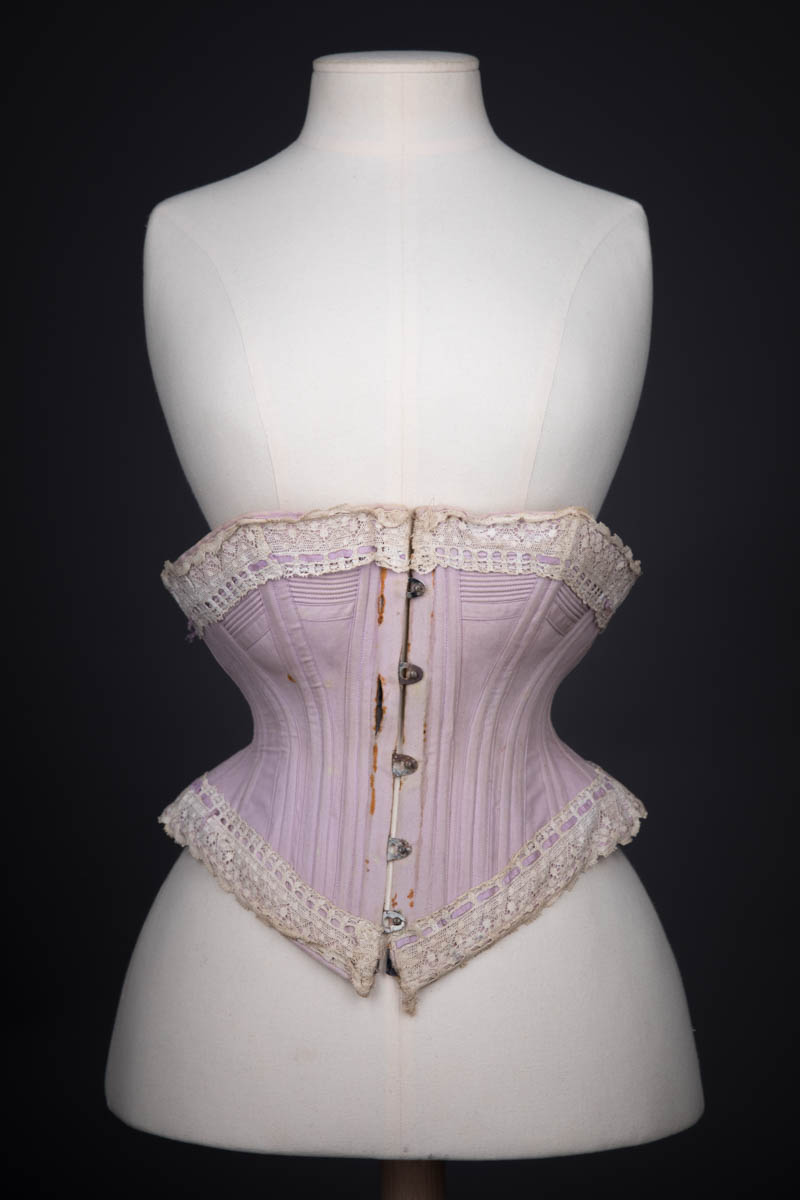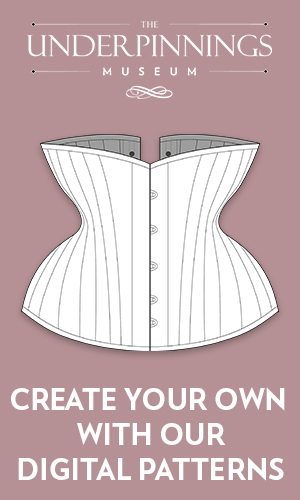Date: c. 1890s
Origin: Possibly France
Fabric: Cotton coutil
Brand: Unknown
A corset in lilac herringbone cotton coutil, lined in undyed cotton twill. It is bound with cotton twill tape, and trimmed with a cotton machine lace threaded with lilac silk ribbon. It is structured with cording at the bust and baleen boning. It fastens with a straight steel busk at the front, and metal eyelets and cotton lacing at the rear.
The interior of the garment reveals the remains of a stamp that possibly says ‘baleine’, likely referring to the material used for the corset’s boning. This would also suggest that the garment was manufactured in France. For much of the 18th and 19th century, baleen was the preferred material for structuring foundation garments. Eventually this led to the over hunting of the baleen whale, and towards the end of the 19th century, the material became much more scarce and expensive.
This scarcity resulted in the innovation of alternative materials for corsetry, with corset manufacturers opting for materials such as cane, feather quills, steel, cording and paper. Baleen bones therefore became a selling point for corsets in the latter part of the 19th century and early 20th century, as it was prized for its lightness and flexibility.
This corset is unusually short waisted, and may have been custom made for an individual with a particularly petite figure.
From the collection of Karolina Laskowska
